- Home
- entertainment
- news
- 17 details you might have missed in 'The Queen's Gambit'
17 details you might have missed in 'The Queen's Gambit'
Kim Renfro

- Warning: Spoilers ahead for Netflix's "The Queen's Gambit."
- The hit limited series "The Queen's Gambit" follows a young chess genius named Beth Harmon through her roller coaster career.
- Insider rewatched every episode to bring you the best references, costume details, and other small moments in the show you might have missed the first time.
Netflix's hit series "The Queen's Gambit" takes place throughout the 1960s, bringing a glamorous spin on what the world of competitive chess might have looked like through a young woman's genius.
The main character, Beth Harmon, undergoes style transformations that reflect her personal relationships and surroundings. The show makes real-world references to famous chess players and pop culture along the way, too.
Insider rewatched every episode in the limited series to take a closer look at some of the smaller details and moments fans might not have picked up on the first time through.
From analyzing Beth's memorable outfits to the poets she quoted, keep reading to see the 17 details you might have missed in "The Queen's Gambit."
In one of Beth's early school classes, the teacher is quoting a notable woman poet named Stevie Smith.
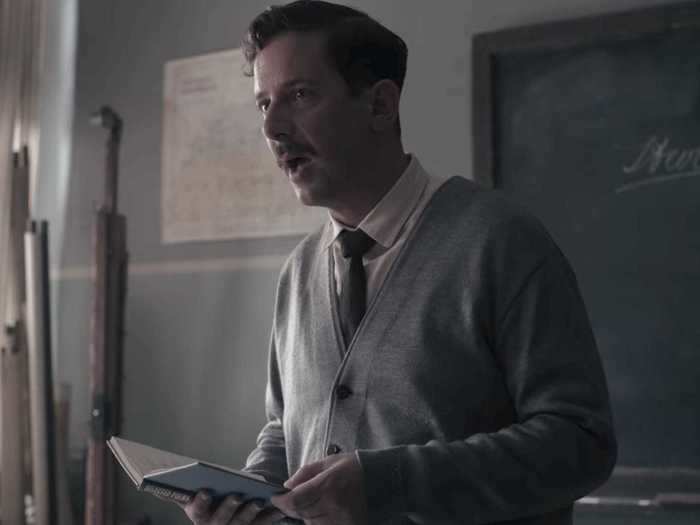
Born in 1902, Smith was known as "one of the most original women poets now writing" by 1957. She won the Cholmondeley Award for Poets in 1966 — the same year the fictional character Beth Harmon became the chess cochampion in the Las Vegas tournament.
Throughout "The Queen's Gambit," there are a few references to famous artistic women who were given noteworthy accolades. Their achievements in fields so often dominated by men (and overseen by mainly male critics) provide a parallel to Beth's own fictional story of success in the world of chess.
The only scene of Beth in high school includes a small connection back to her mother's career in mathematics.
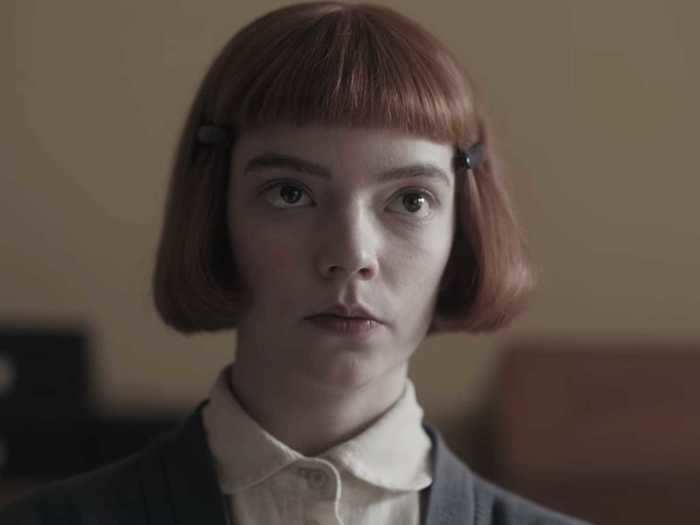
In the pilot episode's flashback to Beth's childhood, we see her pick up a book written by her mother, Alice Harmon, titled "Monomial Representations and Symmetric Presentations."
It was one of the few clear indications given to the audience that Beth's mother was a mathematical whiz in her own right, a trait Beth appears to have inherited.
So it's fitting that in the only upper-level classroom scene in which we see Beth, she's the sole student who can correctly define a "binomial."
Actor Harry Melling based his playing style on a real chess player.
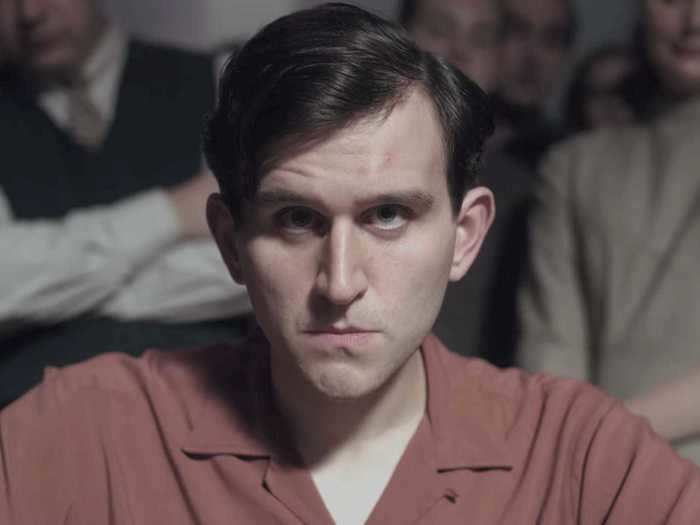
As revealed throughout several interviews, the cast of "The Queen's Gambit" mostly didn't know how to actually play chess. Instead the moves were choreographed and the actors simply memorized where to place each piece for specific shots.
The show had a chess coach named Bruce Pandolfini helping each actor with the style in which they'd pick up pieces and move their hands.
"We each choose a character," Melling told Vulture in an interview. "I focused on a real chess player, Magnus Carlsen. He's very interesting because he's very quick and his hands are very straight in line with the pieces."
Beth didn't just get a new dress with her first chess winnings - she also bought herself the shoes that all the popular girls were wearing in her high school.
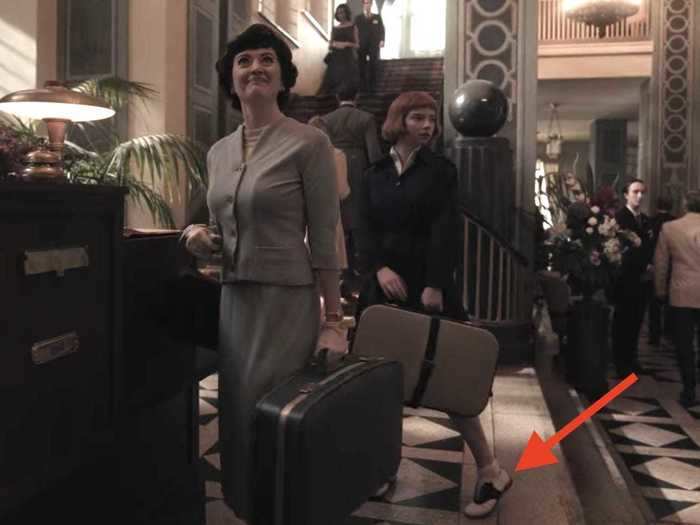
On Beth's first day of high school, the first thing Margaret and the other popular girls did was bully Beth about her clunky brown shoes. In that scene in episode two, the camera pans over to all of their black and white Oxford-style shoes.
At the end of the episode, Beth wins her first cash prize at a chess tournament and goes shopping. Her purchase of a plaid dress and chess set is made very clear in that scene, but you might not have realized that she also picked up a pair of Oxfords, too.
In episode three, as Beth walks through the Cincinnati hotel, you can see her wearing the new Oxfords.
When Townes is photographing Beth, he tells her to say "Ruy López!" That's a chess opening move named after a 16th century priest.
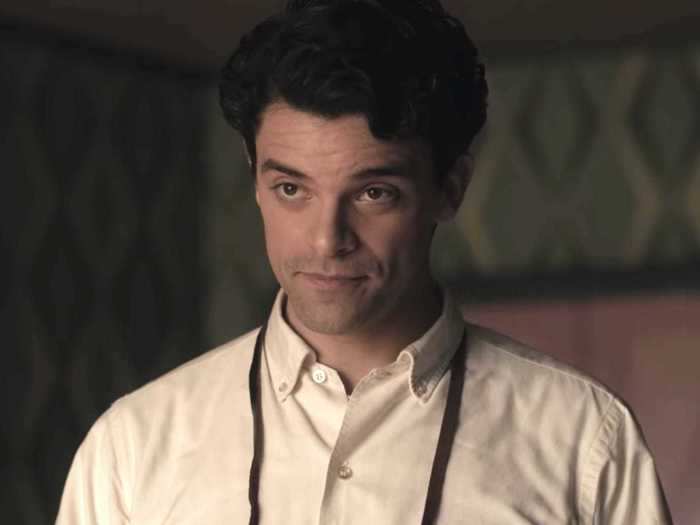
The Ruy López is known as one of the most common chess game openings, so naturally Beth and Townes would have both been familiar with it.
That's not the only mention of the opening in the show, either. Later on, in episode five, Beth observes that Benny and his speed-chess opponent are in "a classic Ruy López."
The first time Beth suffers a major loss in chess, the camera begins to tilt in what's known as a "Dutch angle" shot.
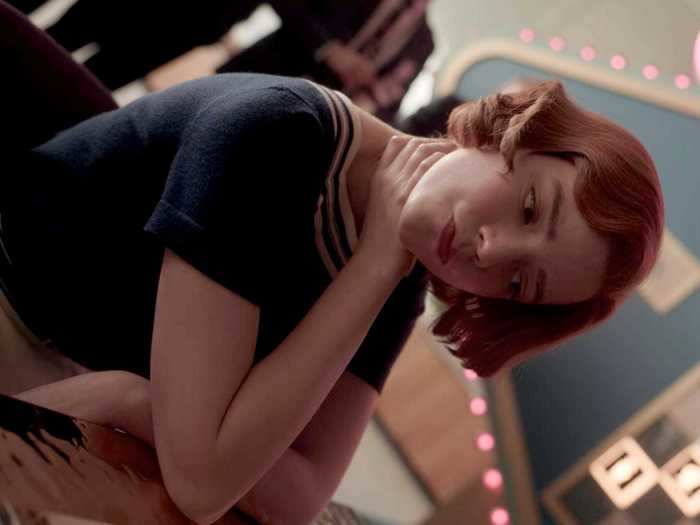
Once you know to look for it, you'll see Dutch angles throughout movies and TV shows. The tilting camera is most often used to make the audience feel an uneasiness or tension. It tells us something is wrong.
Most of Beth's chess matches are shown in a lot of symmetrical frames and visual cues, down to her two hands resting either behind her head or below her chin.
But in the Las Vegas tournament, when she realizes she's about to lose to Benny Watts, the camera begins tilting and moving asymmetrically around Beth and the chess table. She even brings her arms both to one side eventually, signaling how she's been disarmed.
Steven Meizler, the cinematographer of "The Queen's Gambit," mentioned German Expressionism and "The Cabinet of Dr. Caligari" in an interview with Vulture about the show's visual style. That movie has been credited as one of the earliest notable examples of the Dutch angle's use in film.
Beth was likely using young Georgi's interest in American movie stars against him when she picked a yellow top for the conclusion of their match.
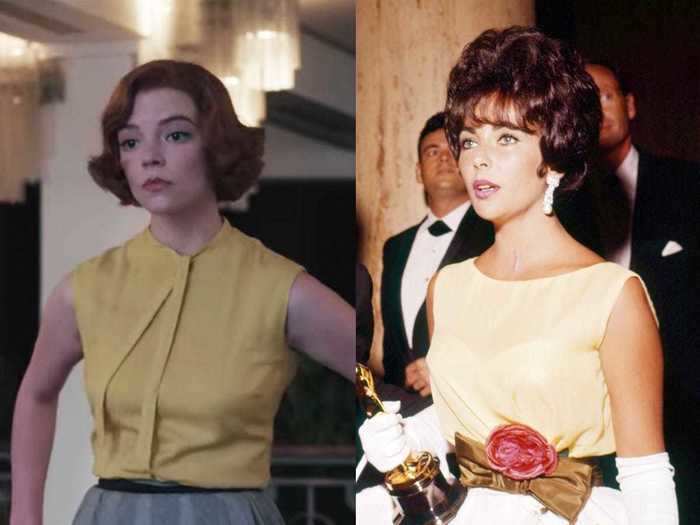
One of the most unusual victories Beth secures comes in episode four when she plays against a 13-year-old Russian player named Georgi.
After hours of playing (indicating that Georgi is closest anyone's come to beating Beth since her Vegas loss), they adjourn. Georgi then asks Beth about drive-in movies, mentioning Elvis Presley, Debbie Reynolds, and Elizabeth Taylor.
The next day, Beth wears a sleeveless yellow top and long skirt. She manages to distract Georgi into quickly losing by standing up, stretching, twirling, and tapping her toes. It seemed a bit odd that he was so easily thrown off his game, but it's possible that her wardrobe choice was specifically meant to echo the famous actresses Georgi loved so much.
Up until this point in "The Queen's Gambit," Beth had never worn the color yellow before. Her style was previously more muted with whites, navy or brown tones. But Elizabeth Taylor wore a memorable sleeveless yellow-topped gown to the 1961 Oscars, and this could have been an intentional style reference in the scene.
Alma's death might have been foreshadowed by the way this scene was framed.
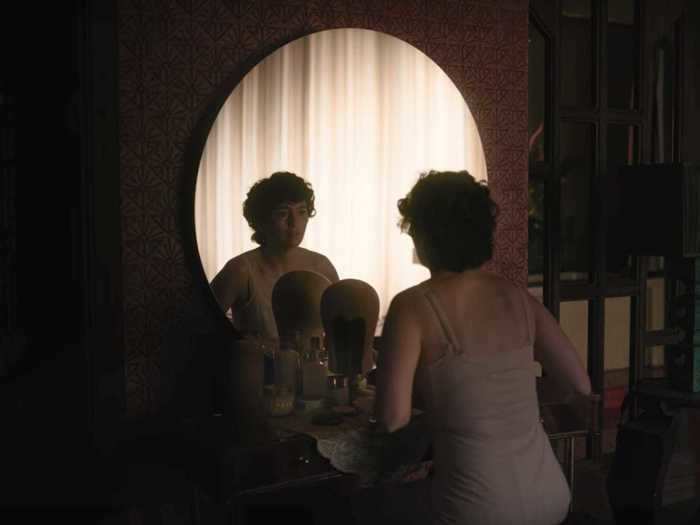
As one fan in "The Queen's Gambit" subreddit noted, the way Alma looks into her hotel room mirror seems to evoke a famous visual pun drawing called "All Is Vanity."
Drawn by the 19th century illustrator Charles Allan Gilbert, the "All Is Vanity" painting shows both a woman looking into a mirror and a human skull.
Alma spends most of her time in Mexico City indulging in a fling relationship and drinking heavily, ultimately dying from her chronic hepatitis illness in the hotel bedroom.
The setting of this shot, which was the last time she's seen alive in the show, might have been an intentional hint at her tragic fate.
Following Alma's death, Beth focuses in on one of the Rosa Bonhuer prints hanging up in their house.
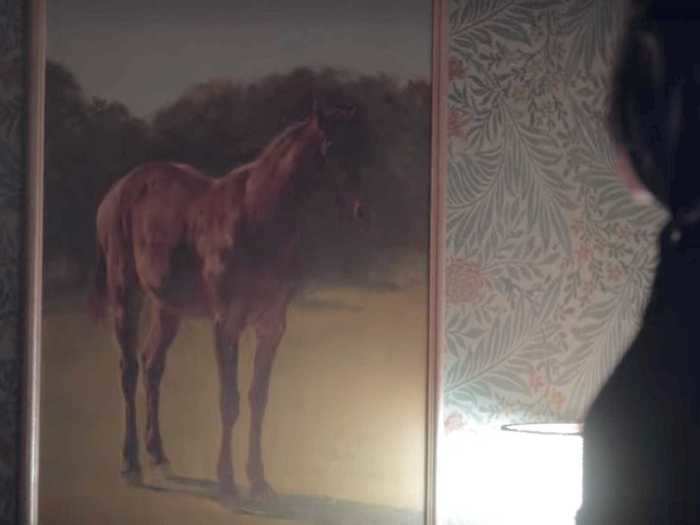
When Beth first arrived at Alma's house, her adopted mother mentioned that she had many Rosa Bonheur prints around the house.
After Alma dies in Mexico and Beth returns to their Kentucky home, Beth focuses on one of the prints. It's a study of a horse painted by Bonheur, a 19th century French artist.
Similar to the character of Beth, the real Bonheur was a talented woman who found success at a young age among the then-male-dominated space of French painters.
Her most famous work, called "The Horse Fair," shows a bustling scene of men and horses in motion.
It's interesting that, of all the Bonheur prints, this image of a single horse is the one Beth notices after Alma's death. There's a link between the solitude of the horse Beth sees, and how it contrasts with the lively image of many animals and people altogether in Bonheur's "The Horse Fair."
Beth's withdrawal from emotional connection after Alma's death led to an intense loneliness in her life that she didn't recover until the series finale.
Margaret was in the Ben Synder's department store just a couple years after she said she "wouldn't be caught dead in Ben Snyder's."
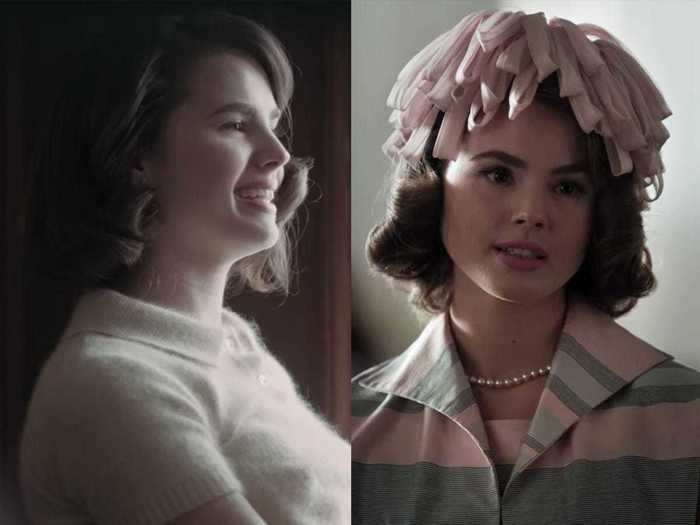
Margaret bullied Beth multiple times about her brown shoes in the early episodes of the season.
In one scene, Margaret was getting felt up by her boyfriend in the library when she told Beth, "I wouldn't be caught dead in Ben Snyder's."
In episode five, a little while after high school graduation, Beth runs into Margaret while shopping at Ben Snyder's. Margaret is a new mom, and by the looks of her stroller contents, coping with domestic life by drinking heavily.
It's a neat full-circle moment for the girl who once tried to diminish Beth's successes.
Cleo might have been a Russian plant sent to sabotage Beth in Paris.
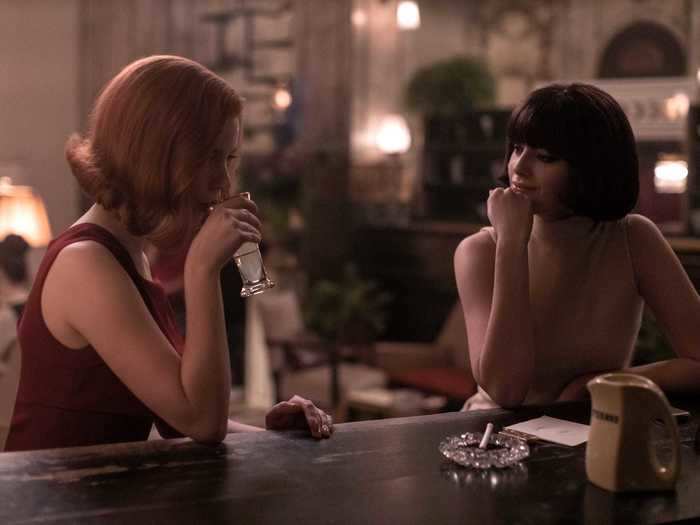
One of the show's most mysterious characters is Cleo, the young French woman who befriends Beth and cajoles her into drinking the night before an important game against Borgov.
Her presence in Paris and the way she shows up coincidentally the night before Beth's most important match set off some alarm bells. Why wouldn't she take Beth's reasonable "no" to sharing a drink at the bar as a final answer? Why didn't she ever turn up again to support Beth or console her after the devastating loss?
One theory we have (shared by some fans on Reddit) is that Cleo was actually working for the Russian teams.
She has a vague backstory about meeting up with two well-known chess players, who in turn introduced her to Benny Watts. Then she meets Beth through those same players.
At the time, Beth was trying to stay sober and kick her addiction to both tranquilizers and alcohol. But Cleo comes in with champagne, immediately distracting Beth during her training sessions.
Then in Paris, Cleo shows up and manages to get Beth to the bar for "just one" drink. That turns into many and Beth falls off the wagon entirely.
Cleo sits in on the match and sees Beth lose, but then we never hear from her or see her again. If she was genuinely interested in being Beth's friend, she wouldn't have vanished like that, right?
The Russians knew Beth had addiction issues and would have wanted to exploit that weakness. Plus, Benny was the former US champion. Cleo was likely also collecting information on him during their past relationship.
The dress Beth wears during her Paris match against Borgov matches her tranquilizer pills.
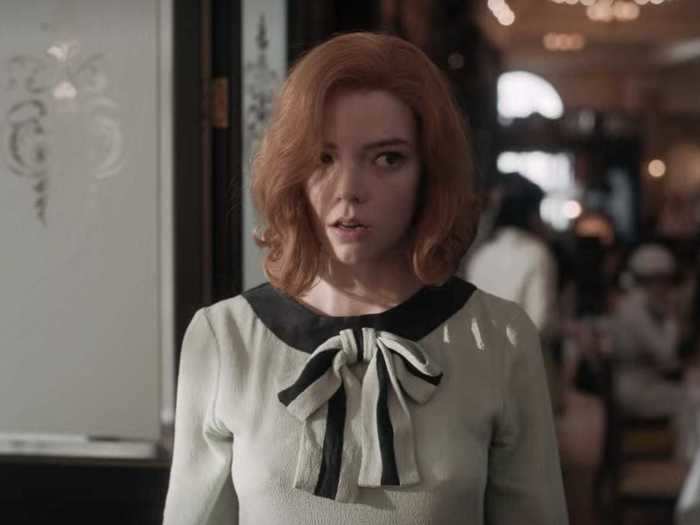
In a neat visual link, Beth is wearing a dress with the exact same contrasting shades of green as her tranquilizer pills the morning after Beth breaks her sobriety.
She takes more of them before her match with Borgov, but is too hungover and panicked to pull off the win.
During her bender, Beth wears light pinks and blues; the same colors Alma used to favor.
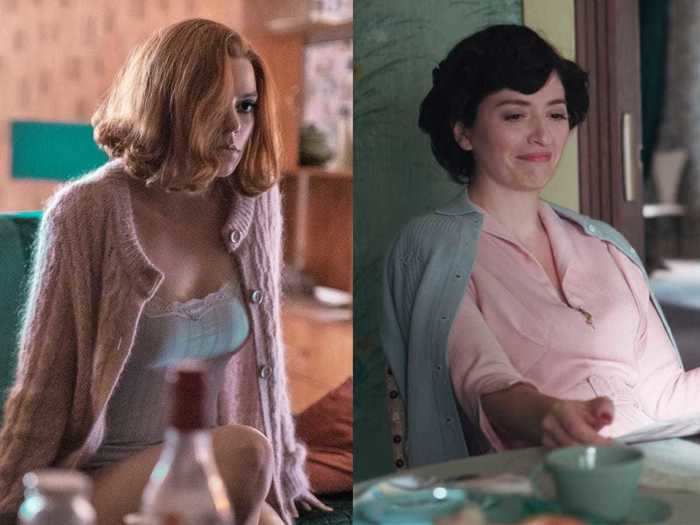
Following the loss in Paris, Beth eventually falls deeper into her addiction and goes on a full pill and alcohol bender.
She's not only grieving her failure in Paris, but it also seems like the first time she's letting herself grieve for Alma. While dancing and drinking in the house, Beth wears a pale blue top with a pink cardigan — an exact reversal of an outfit Alma wore in an earlier episode.
Alma frequently wore pastel shades of blue and pink, while Beth tended to favor a darker navy and maroon or green color scheme.
The way she dresses similarly to Alma in that drinking scene seems to intentionally evoke the loss she's feeling.
One of the newspaper clippings Mr. Schaibel saved features this opening line: "Beth Harmon proves not all women are dumb."
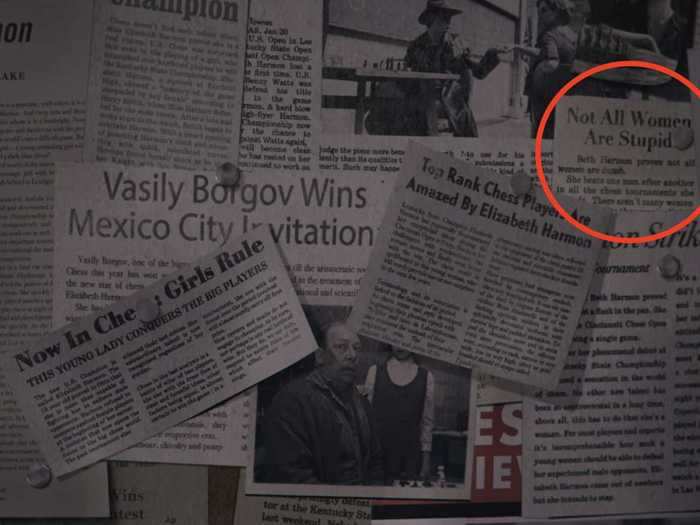
The rest of the articles are all singing Beth's praises and acknowledging what a chess phenomenon she is, but tucked in among those is the headline "Not All Women Are Stupid."
It's yet another reminder of the misogyny Beth faced throughout "The Queen's Gambit," and it also makes for a rather hilarious Easter egg.
Beth still uses the first chess set she ever bought. You can see it on her hotel room table in Russia.
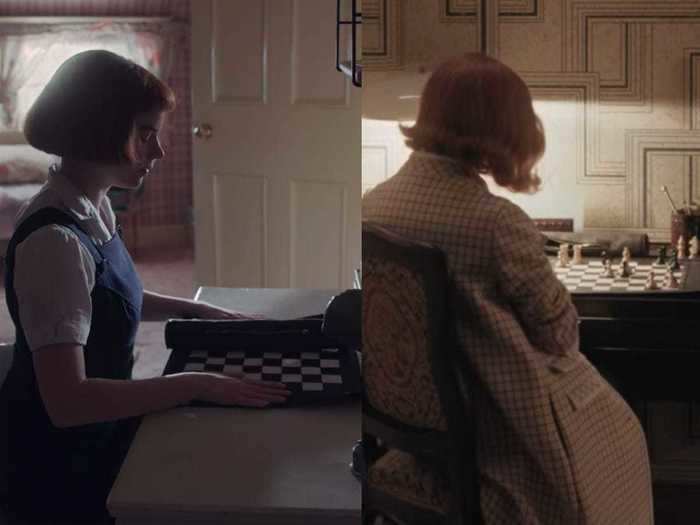
At the end of episode two, Beth used her winnings from the local tournament to buy her very own chess set. It comes rolled up with all the pieces in a cylindrical carrying case.
In the finale, when Beth goes into her Russian hotel room so she can work out how to beat Luchenko, you can see that same cylindrical case on her desk. She brought her first-ever chess set with her to the Moscow Invitational, and it helped her win the World Champion title.
Townes mentions that the Russian embassy thought he'd distract Beth - another hint that Cleo wasn't all she seemed.
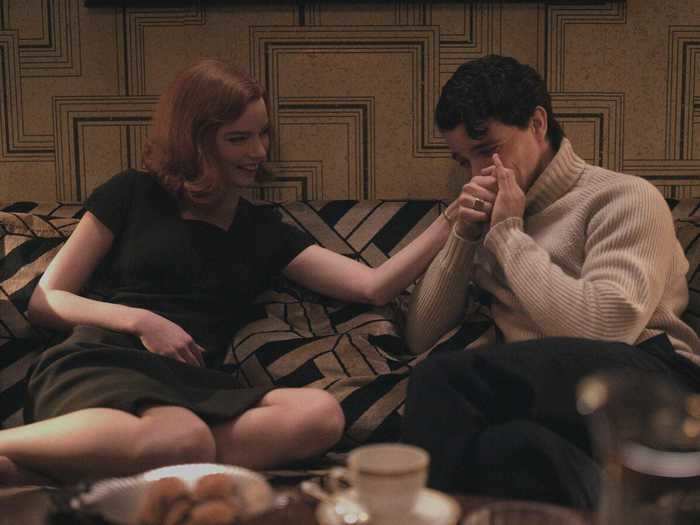
Just in case you weren't already convinced by the "Cleo was a Russian spy" theory, another clue comes in the series finale.
When Beth asks how Townes managed to get a visa at the last minute, he says the Russian embassy may have helped because they thought he would distract Beth.
Cleo is the only person who knew that Beth was in love with Townes (or at least that she once was). We never saw Beth speak about her feelings for him with anybody else. So how would the Russian embassy know that Townes could be "distracting" for Beth?
It only adds up if Cleo told the Russians after that night in Paris.
Beth dressed like a white queen chess piece after her win.
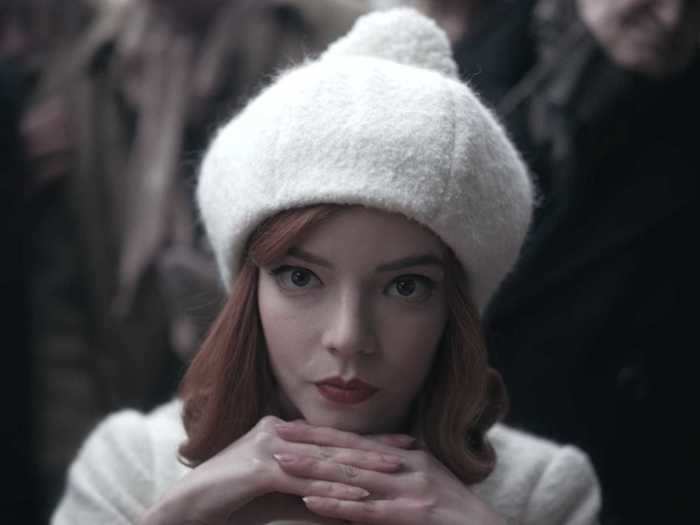
Throughout "The Queen's Gambit," Beth rarely wore hats. That's partly why her final outfit, a glamorous white coat with a matching hat and pants, looked so striking.
With the small bauble on top, the hat seals Beth's look as a visual reference to the white queen chess piece.
The show's costume designer Gabriele Binder said this was an intentional reference.
"The idea, of course, is to convey that she is now the queen on the chessboard and the chessboard itself is the world," Bindel said in an interview with Vogue.
READ MORE ARTICLES ON
Popular Right Now
Popular Keywords
Advertisement